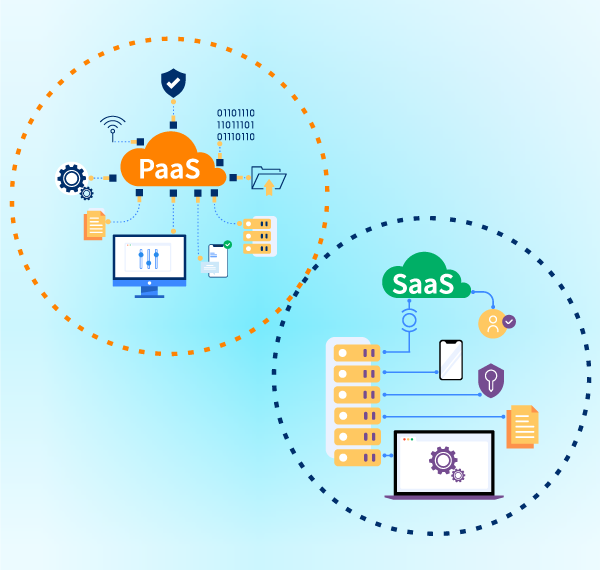Choose the Right Pathway to Transform Operations and Drive Growth

Businesses are increasingly turning to software solutions to manage regulatory compliance and prevent fraud. At the core of this pursuit lies a pivotal debate – the choice between integrating and maintaining one or more specialized point solutions or committing to a more comprehensive platform approach.
While both options aim to enhance risk management and operational efficiency, their flexibility and scalability vary considerably. The 'right' choice depends on the organization, offering the potential to tailor a solution exactly to a business's needs without the hefty investment of custom in-house tools. The 'wrong' choice increases the risks of data silos across departments, strains on IT and a slower rate of adoption.
While both options aim to enhance risk management and operational efficiency, their flexibility and scalability vary considerably. The 'right' choice depends on the organization, offering the potential to tailor a solution exactly to a business's needs without the hefty investment of custom in-house tools. The 'wrong' choice increases the risks of data silos across departments, strains on IT and a slower rate of adoption.
Platform: Scalable and Holistic
A platform is an integrated set of tools that can solve multiple use cases across a particular domain, such as preventing identity fraud and money laundering. In the context of client onboarding and ongoing monitoring, a platform provides a single view of risk, leveraging diverse technologies, data and methodologies.Platform Benefits:
- Platforms can easily scale with business growth. Their flexibility allows for the seamless integration of new tools, features and data sources, making them ideal for organizations with complex and evolving needs.
- They encourage collaboration by providing a centralized location for teams to access and share risk-related information, enhancing transparency, communication and efficiency across departments.
- Platforms offer long-term cost-effectiveness through comprehensive features, scalability and operational efficiency, making them a strategic and economical choice for sustained growth.
- Anticipate challenges when integrating with existing systems and workflows to avoid rollout delays and additional IT costs. Consider factors such as data migration, interoperability, customization and testing to mitigate disruptions.
- Understand a platform's security features, encryption protocols and compliance certifications to protect against unauthorized access and safeguard sensitive information.
- Consider potential challenges in user adoption. Plan effective change management strategies, including comprehensive training programs and ongoing support to maximize uptake.
Point Solutions: Single-Minded and Focused
In contrast to platforms, point solutions are typically designed to solve a single problem or use case. Whether detecting a specific type of fraud or managing a particular aspect of compliance, these tools excel because of their dedicated approach tailored to the specific challenges they address.Point Solution benefits:
- Point solutions are generally easier to implement than more comprehensive platforms, since there are fewer variables, features and configurations that need to be managed.
- They are typically less expensive than platforms due to their narrow scope and focused functionality.
- Implementing a point solution carries fewer operational risks than a platform, in relation to day-to-day workflows and business processes. If the solution doesn’t meet requirements, it can be replaced with comparatively less disruption.
- If opting for a single-purpose solution, evaluate its long-term scalability, considering factors such as its ability to adapt to new situations, ingest increased data volume and accommodate user expansion.
- A growing collection of point solutions implemented within an organization can lead to rising IT and administrative costs, encompassing licenses, training, integration maintenance and managing multiple vendor relationships.
- Check if the solution easily integrates with existing tools and systems. Limited integration capabilities may lead to data silos, communication inefficiencies and higher IT overhead.
Select an Approach That Supports Your Organization’s Goals and Growth Trajectory
As organizations consider this decision, the emphasis is not only on mitigating risks effectively today but also on preventing unforeseen challenges before they arise.The choice between adopting an all-encompassing platform or one of more single focused point solutions requires considerations such as your business’s digital transformation journey, existing technology architecture, productivity dependencies, financial considerations, IT bandwidth and expansion plans.
Pressures to stay compliant and reduce fraud demands a responsive risk management strategy. LexisNexis Risk Solutions, with its robust suite of point solutions available via its risk orchestration platforms recognizes the need for flexibility in addressing the diverse needs of businesses.
Our ebook "What is Risk Orchestration?" looks to help organizations of all sectors and sizes transform their business operations, drive growth and reduce costs with an integrated approach. Visit here to access ebook.
